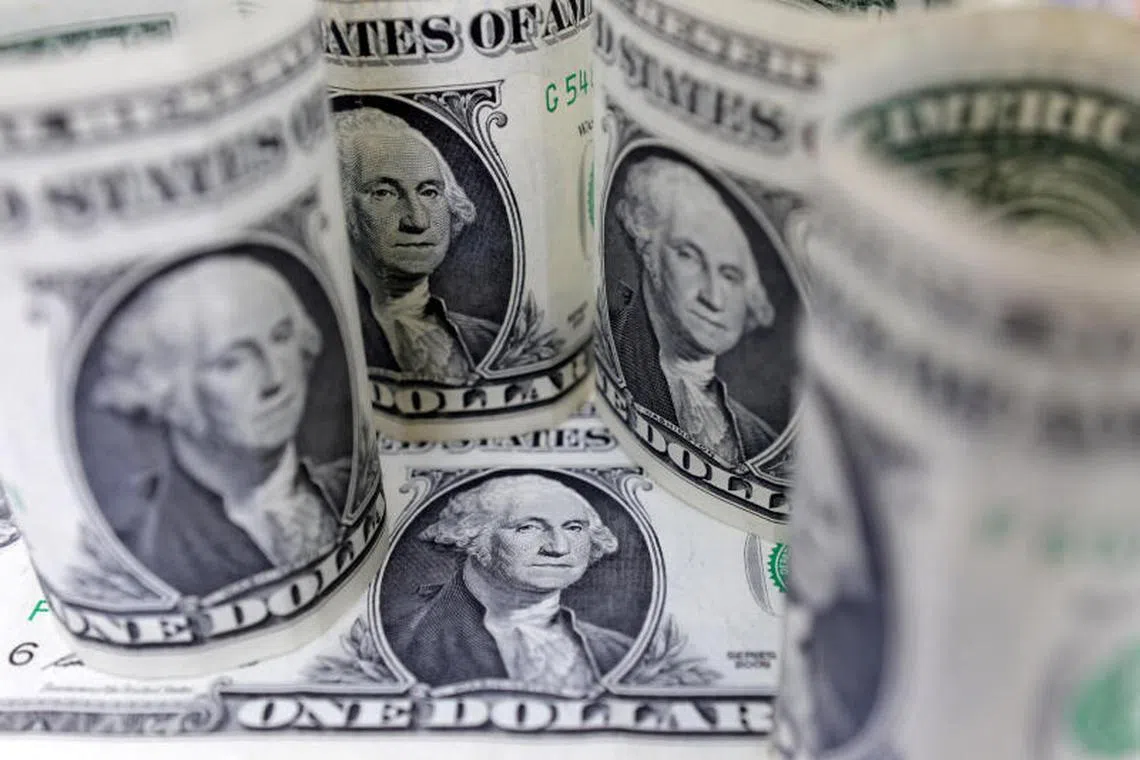US dollar eyes best year since 2015, though rally has started to reverse
Sign up now: Get ST's newsletters delivered to your inbox

The US dollar index has surged more than 8 per cent this year, the most since 2015.
PHOTO: REUTERS
Follow topic:
SINGAPORE – The United States dollar was on track for its best performance in seven years on Friday, having been buoyed by the Federal Reserve’s aggressive monetary policy tightening and concerns about the global growth outlook.
The US dollar index, which measures the greenback against a basket of currencies, has surged more than 8 per cent in 2022, the most since 2015. It was last 0.05 per cent lower at 103.93.
The Fed has raised rates by a total of 425 basis points
But expectations that it may not have to raise rates as high as previously feared have caused the greenback to unwind its towering rally. The US dollar index has fallen more than 7 per cent this quarter.
“I expect the king dollar to lose its crown and... the dollar to make a more decisive turn by the middle of next year,” Bank of Singapore currency strategist Sim Moh Siong said.
Conversely, an ultra-dovish Bank of Japan (BOJ), in the face of a hawkish Fed, has spelt pain for the Japanese yen. It has fallen more than 13 per cent in the year to date, its worst performance since 2013.
But last week’s surprise tweak to the BOJ’s bond yield control has investors betting that the central bank may soon fully abandon its controversial policy, sparking a rebound in the fragile currency.
The yen was last 0.3 per cent higher at 132.63 per dollar.
“The question is whether there is more to come,” Mr Sim said. “But I think the fundamental backdrop for Japan is starting to turn in favour of the yen.”
The euro rose 0.01 per cent to US$1.0661, but is on track for a more than 6 per cent fall in 2022, pressured by a combination of weak euro zone growth, the war in Ukraine and the Fed’s hawkishness.
The single currency had dipped below parity against the dollar earlier in 2022 for the first time in almost two decades.
The pound edged 0.03 per cent lower to US$1.2050, looking set to cap a tumultuous year embroiled in political drama with a nearly 11 per cent drop, the worst since 2016.
Policymakers from the European Central Bank (ECB) and the Bank of England (BOE) have signalled more rate hikes to come in 2023, in a bid to tame inflation even at the risk of hurting their economies.
“The ECB and BOE forced to tighten policy more aggressively amid stubborn cost shocks... It is almost certain to tip Europe into a fairly deep recession,” said Mr Vishnu Varathan, Mizuho Bank head of economics and strategy.
The Singapore dollar is up 0.36 per cent against the greenback this year. At 11.20am local time, it was trading at 1.3442 per US dollar.
Elsewhere, the Australian dollar was headed for a 7 per cent yearly slump, and last fell 0.2 per cent to US$0.6763. The New Zealand dollar, which has fallen more than 7 per cent in the year to date, the worst since 2015, slipped 0.24 per cent to US$0.6335.
Both currencies, often used as liquid proxies for the Chinese renminbi, will likely take leads from how China’s reopening plays out.
China’s U-turn of its rigid zero-Covid policy
The offshore renminbi, which last bought 6.9745 per dollar, was headed for a nearly 9 per cent yearly decline, with China reeling from the effects of its stringent Covid-19 restrictions.
“Into 2023, the immediate focus will be on growth. On the one hand, global growth is slowing... but on the other, China’s reopening brings hopes,” said OCBC Bank currency strategist Christopher Wong. “The issue is whether the rapid reopening (in China) triggers fresh waves in some countries or regions, and that may lead to fresh curbs. This would undermine sentiment in the near term.” REUTERS

